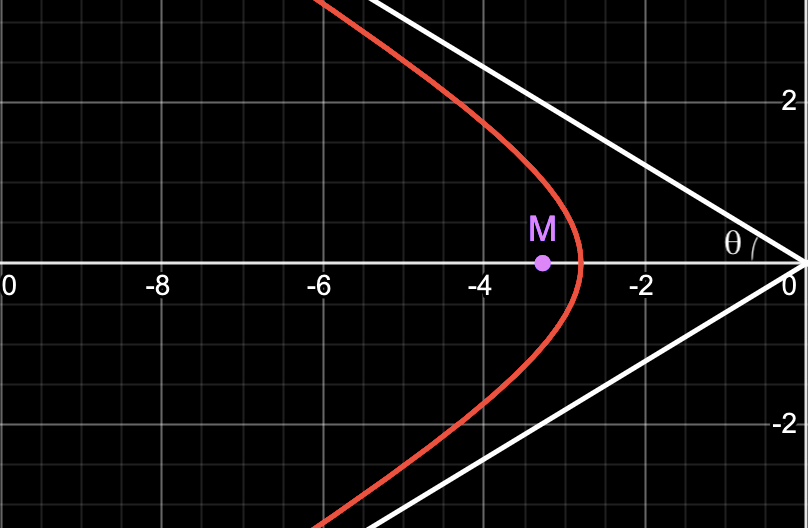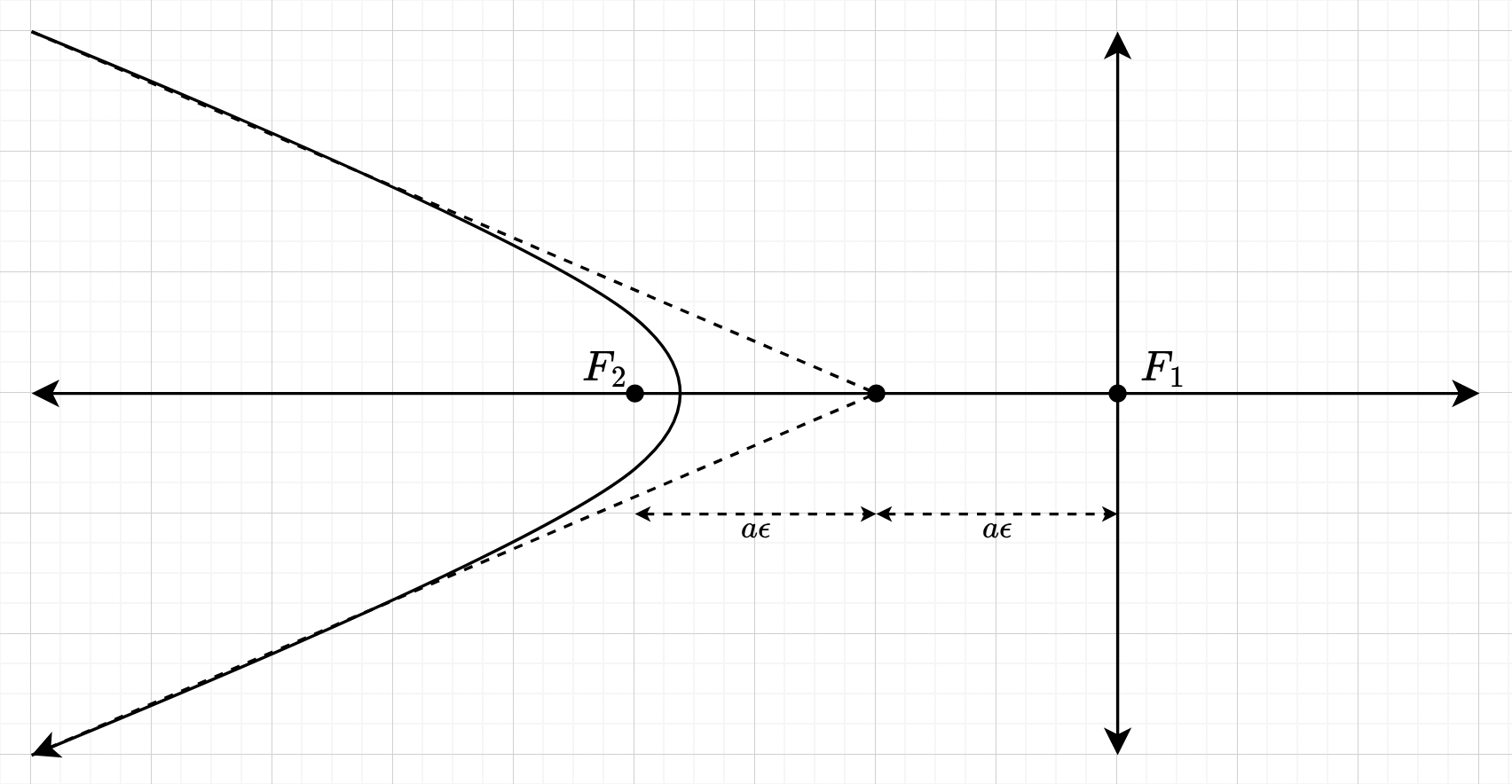7.7
Part a
The particle’s trajectory will be a standard hyperbola in a coordinate system where the axis and origin have been chosen appropriately, the equation of which will be
where , and , where (since the potential energy at is ). It is given that . So, the above equation can be rewritten as ()
We are given the distance of closest approach , which is also the length of the semi-minor axis of the trajectory. can be computed with the given data:

We know that the equations of the asymptotes of the hyperbola are . Thus, . The angle of deflection, of course, is , as desired.
Part b
Let be the area of the infinitesimal ring of inner radius and outer radius . Then, . We know from part that the angle of deflection is uniquely determined by the impact parameter . Thus, all particles originating in this ring will have the same deflection angle .

From part a, we have
Also, we know that . It follows that . Now,
7.21
Redefining to be has the effect of replacing with everywhere in section 7.4. Thus, for to be positive in
, i.e, must be greater than for the trajectory to be defined. Thus, only hyperbolic orbits can be achieved.
In the equation of the hyperbolic orbit given in 7.34, is now negative. Thus, the center of the hyperbola now lies at
The focus is away from the center, the focii of the hyperbola are located at
is only defined when . Thus, the trajectory of the particle is the left branch of the hyperbola.
